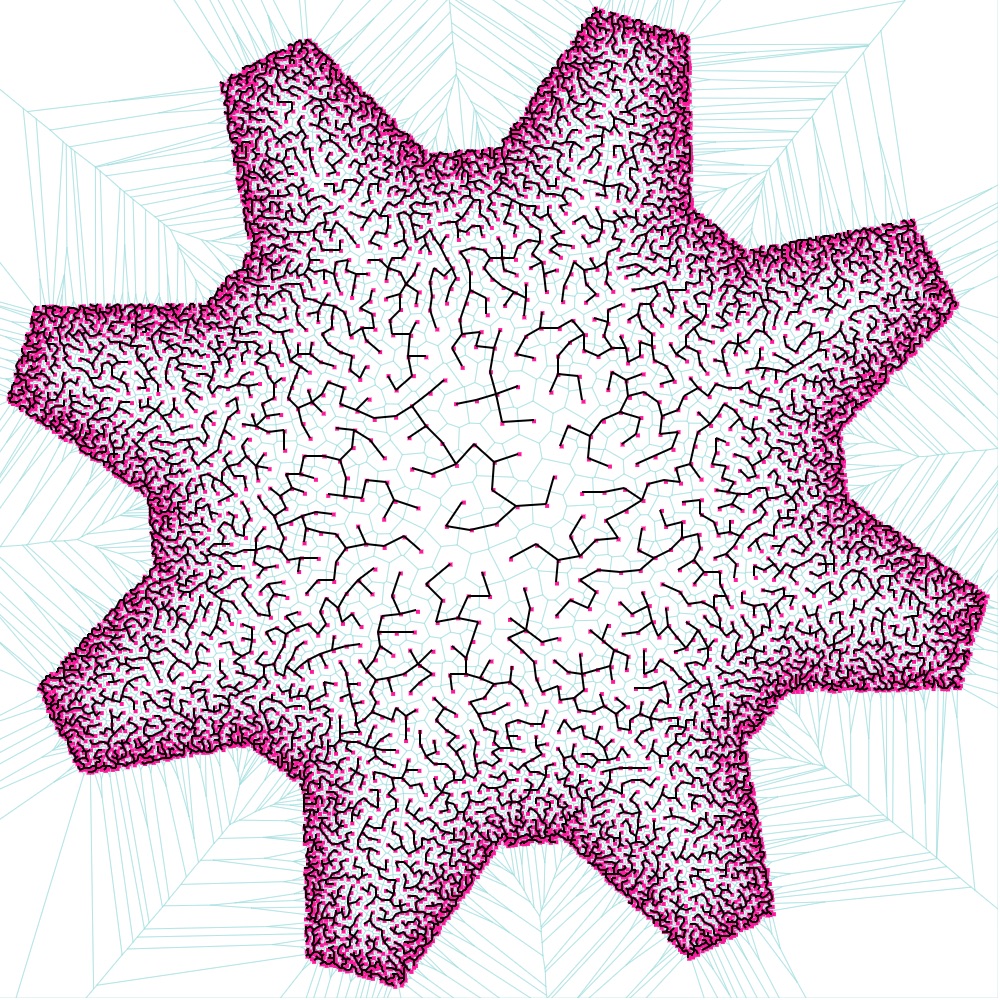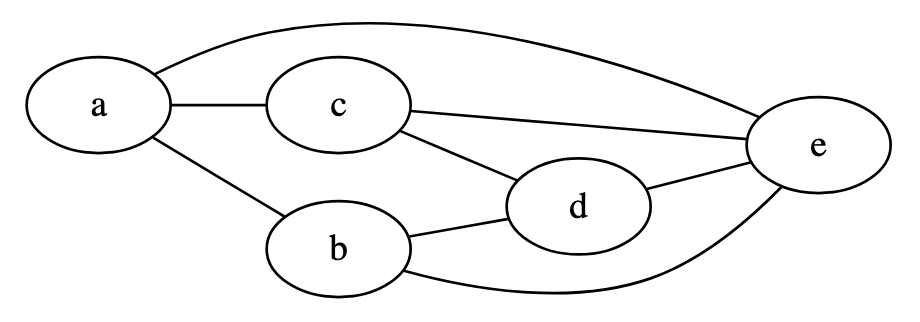Important
Please participate in the survey here!
(open until end of February)
To achieve a better sample size, I'd highly appreciate if you could circulate the link to this survey in your own networks.
Note
This is one of 189 standalone projects, maintained as part of the @thi.ng/umbrella monorepo and anti-framework.
🚀 Help me to work full-time on these projects by sponsoring me on GitHub. Thank you! ❤️
Sparse & bitwise adjacency matrices, lists and selected traversal algorithms for directed & undirected graphs.
The following types all implement the IGraph
interface and
support both directed & undirected graphs:
- Breadth-First Search
- Depth-First Search
- Floyd-Warshall (global shortest paths search)
- Minimum Spanning Tree
STABLE - used in production
Search or submit any issues for this package
- @thi.ng/dgraph - Type-agnostic directed acyclic graph (DAG) & graph operations
yarn add @thi.ng/adjacencyES module import:
<script type="module" src="https://cdn.skypack.dev/@thi.ng/adjacency"></script>For Node.js REPL:
const adjacency = await import("@thi.ng/adjacency");Package sizes (brotli'd, pre-treeshake): ESM: 2.74 KB
One project in this repo's /examples directory is using this package:
| Screenshot | Description | Live demo | Source |
|---|---|---|---|
 |
Poisson-disk shape-aware sampling, Voronoi & Minimum Spanning Tree visualization | Demo | Source |
TODO
import { defAdjBitMatrix, type Edge } from "@thi.ng/adjacency";
// relationships
const rels = {
a: ["b", "c"],
b: ["d"],
c: ["d", "e"],
e: ["a", "d", "b"],
};
// form set of unique node IDs
const nodeIDs = [
...new Set(Object.entries(rels).flatMap(([id, rels]) => [id, ...rels])),
];
// the current adjacency matrix impls only support numeric node IDs
// therefore, we first map node names to numeric IDs
const index = new Map(nodeIDs.map((id, i) => [id, i]));
// transform relationships into sequence of edges (aka `[from,to]` tuples)
const edges = Object.entries(rels).flatMap(([id, rels]) =>
rels.map((x) => <Edge>[index.get(id), index.get(x)])
);
// build adjacency matrix, treat as undirected graph
// edges can also be added/removed later
const graph = defAdjBitMatrix(nodeIDs.length, edges, true);
// graph queries
console.log("edges:", graph.numEdges(), "verts:", graph.numVertices());
// edges: 8 verts: 5
// check if vertex/node is present in graph
// (this is implementation specific and for the bitmatrix backed version here
// only true if the vertex has at least 1 edge...)
console.log(graph.hasVertex(index.get("d")!));
// true
// are `a` and `d` connected?
console.log(graph.hasEdge(index.get("a")!, index.get("d")!));
// false
// number of connected nodes for `a`
// (in directed graphs, there's also possibility to distinguish between in/out/inout)
console.log(graph.degree(index.get("a")!));
// 3
// neighbors of `a` (with reverse lookup of node names)
console.log(graph.neighbors(index.get("a")!).map((x) => nodeIDs[x]));
// [ 'b', 'c', 'e' ]
// serialize to GraphViz DOT format (see result visualization below)
console.log(graph.toDot(nodeIDs));
// graph g {
// "d"--"e";
// "c"--"d";
// "c"--"e";
// "b"--"d";
// "b"--"e";
// "a"--"b";
// "a"--"c";
// "a"--"e";
// }
// resize to new capacity & add add/remove vertices/edges
graph.resize(10);
graph.addEdge(4, 5);
graph.removeEdge(0, 1);GraphViz visualization of the above example graph:
- Karsten Schmidt (Main author)
- Igor Loskutov
If this project contributes to an academic publication, please cite it as:
@misc{thing-adjacency,
title = "@thi.ng/adjacency",
author = "Karsten Schmidt and others",
note = "https://thi.ng/adjacency",
year = 2018
}© 2018 - 2024 Karsten Schmidt // Apache License 2.0
